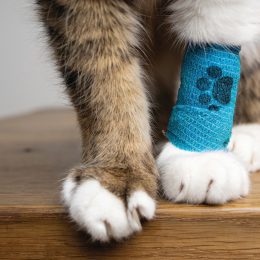
If you’ve found added comfort in the company of furry family members while sheltering in place, maybe you’re considering adding another set of paws upon your floor. Perhaps you’ve heard of a pet orphaned by COVID-19; or you think your pets would welcome the added company after life returns to normal and they are once again left alone most of the day.
While a new dog or cat and your current pet or pets may soon become best buds, they should be introduced carefully. You don’t want your pet to feel that its territory has been invaded or your affection has been divided. Here are some things to consider.
Be a good matchmaker
Consider the temperament and ages of both your current pet and the new animal.
Learn all you can about the new pet. An animal shelter often will have a dossier on each of its adoptable animals that includes whether it would be a good fit for a home with other animals.
Try to match dogs or cats with similar habits. If your pet likes to lie in the sun all day, selecting a kindred spirit might be a good idea. If your pet is older and a tad grumpy, it might find a frisky young ’un an annoyance. Adult cats will usually accept a kitten more easily than they will accept a new adult cat. But if both your present cat and the new cat are easygoing, you may have little trouble if you introduce them slowly and correctly.
Maintain social distance
Your new dog or cat should be checked by a veterinarian to ensure it’s not carrying any illness or parasites before introducing it to your existing pet or pets.
Handle with care
Regardless of whether you are getting a new cat or a new dog, the first introduction between your current pet and your new pet is very important. Introduce the animals gradually over the course of a week so that neither animal becomes afraid or aggressive. Be patient.
If you are introducing dogs, take a walk in a neutral area with your dog and bring a friend along to walk your new dog. Walking allows dogs to bond and gather information about one another.
Keep your new cat separated in another room from your current cat, and let them get used to each other’s scent first.
If it’s a meeting of a dog and a cat, keep them separated for a few days as well. Allow them to get used to each other’s scent and presence without face-to-face contact. Once they seem calm, allow them to be in the same room but keep the dog leashed. Make sure the cat has access to a dog-free sanctuary at all times. The space should include a litter box, scratching post, water, food bowl, and toys.
Your vet or an animal behaviorist can also provide ideas for making sure the introductions go smoothly. In addition, the internet has a wealth of information and videos from many sources.
If after a few weeks one or both animals are still showing signs of aggression, consult a professional animal behaviorist for more advice or intervention.



